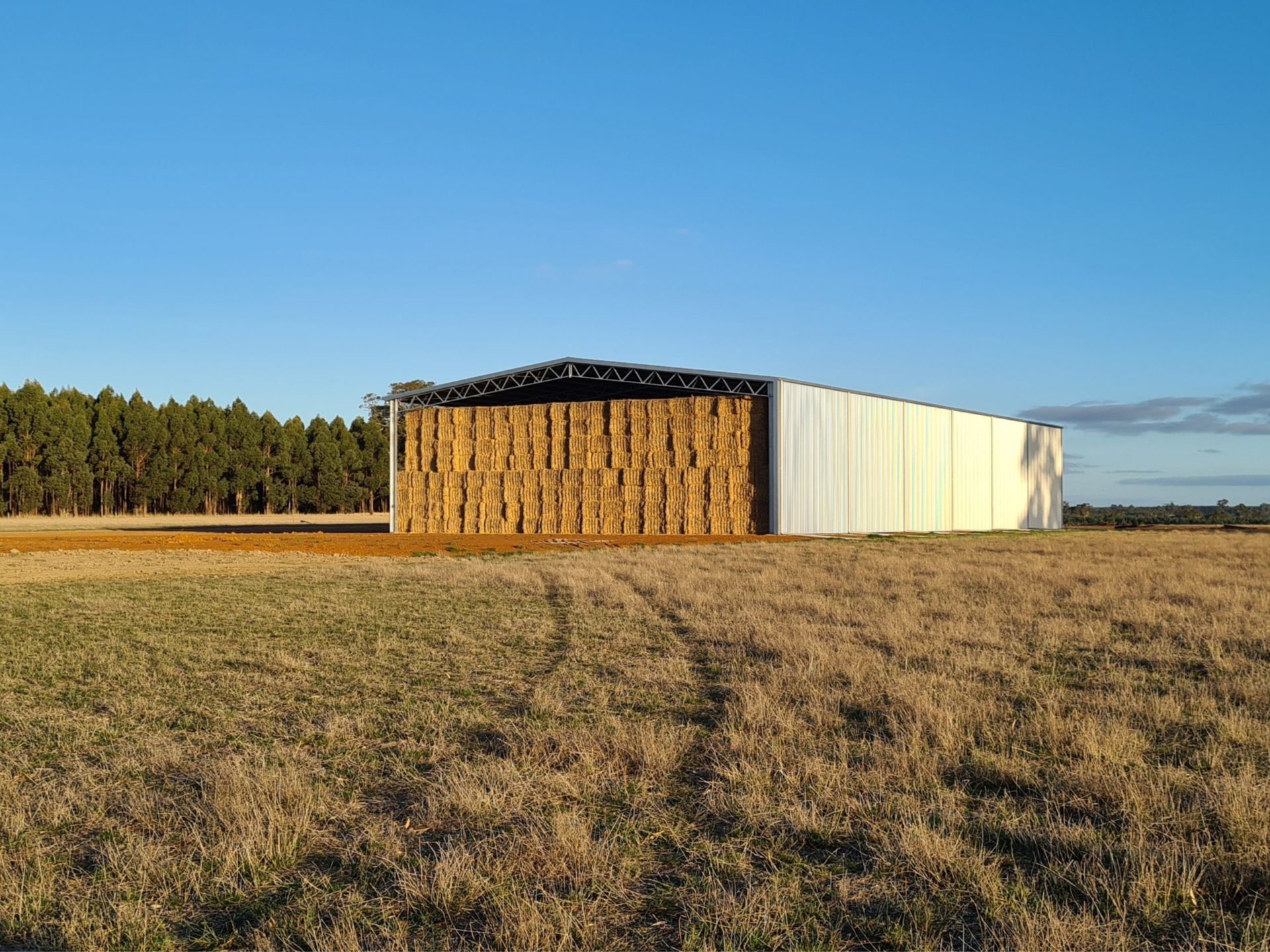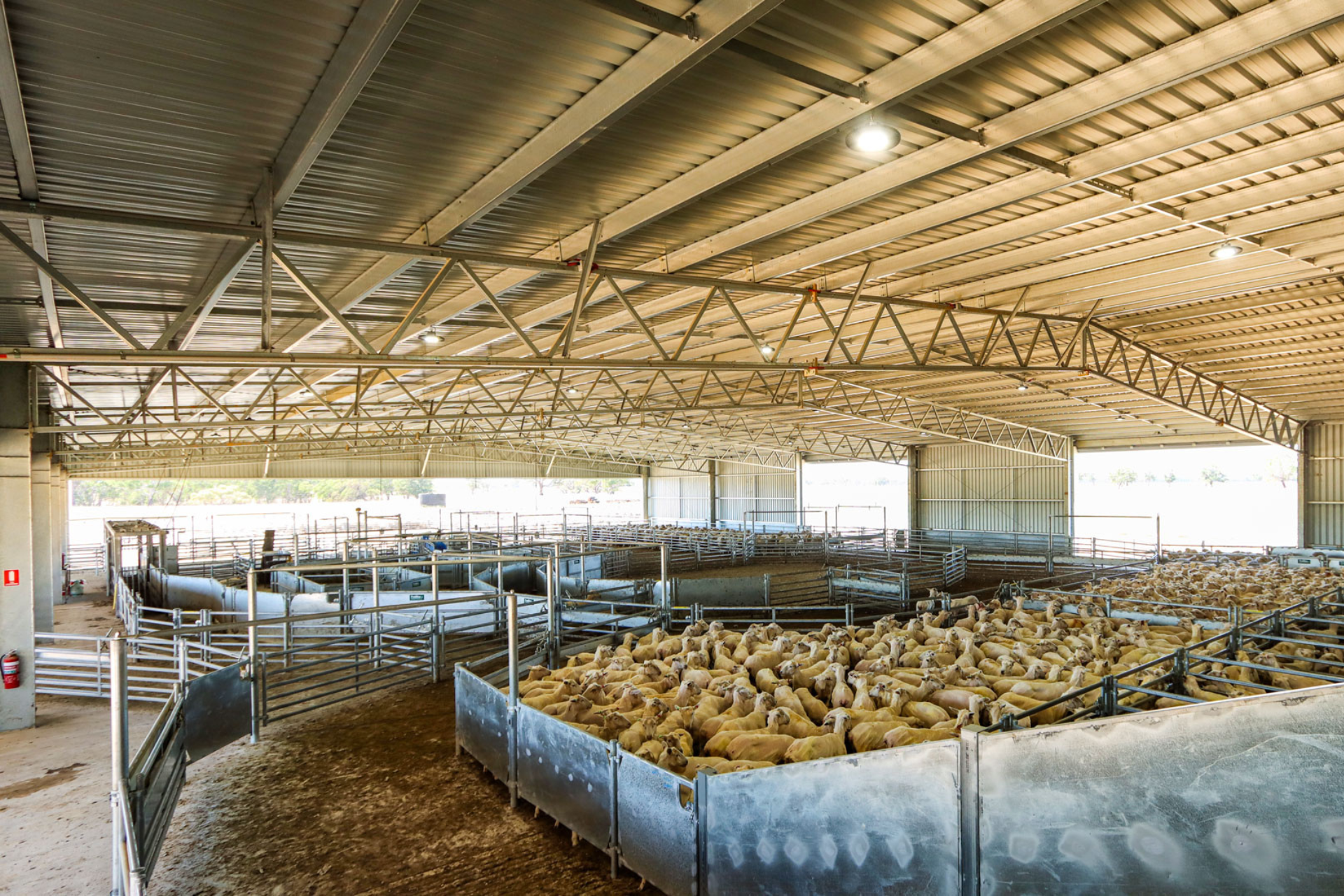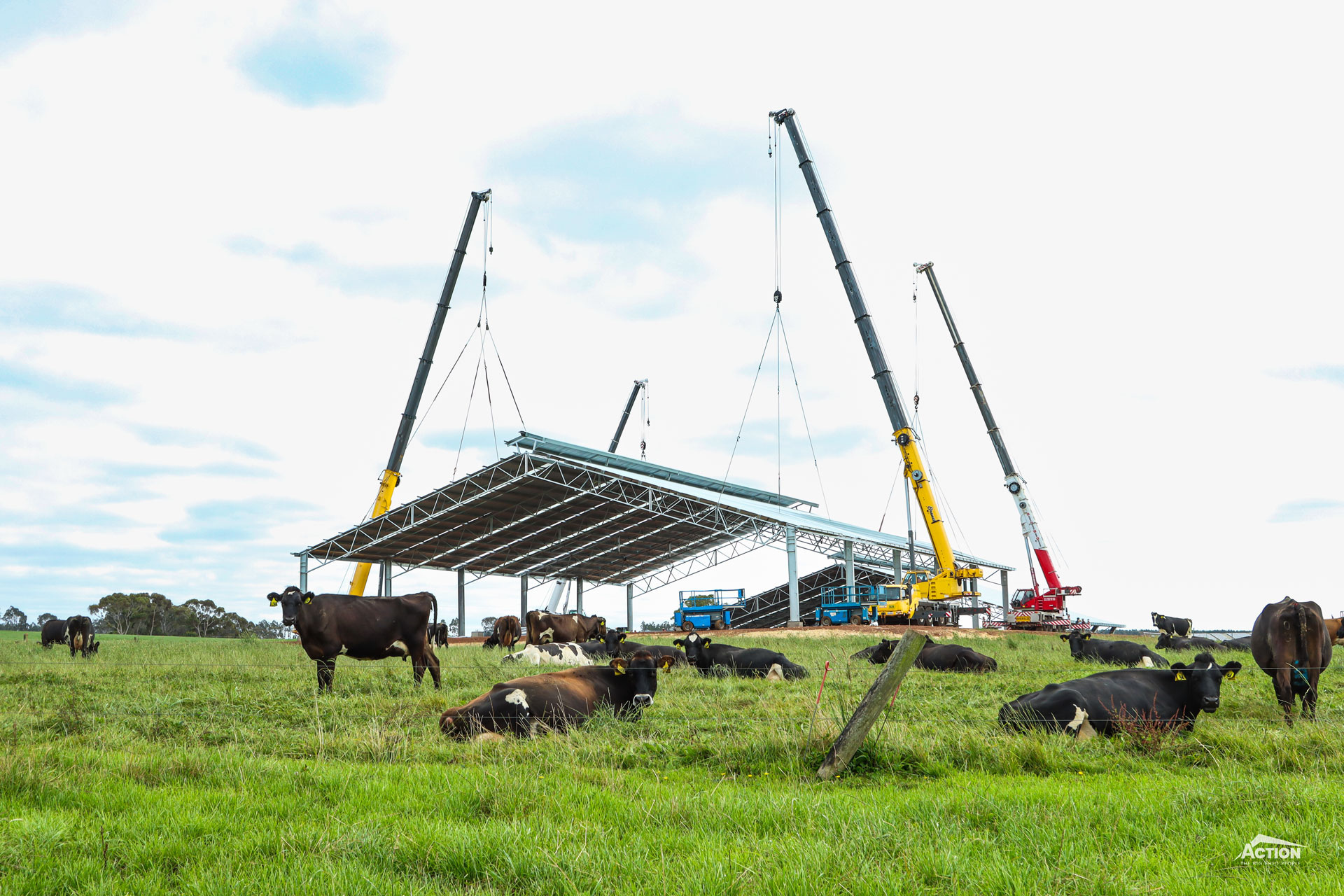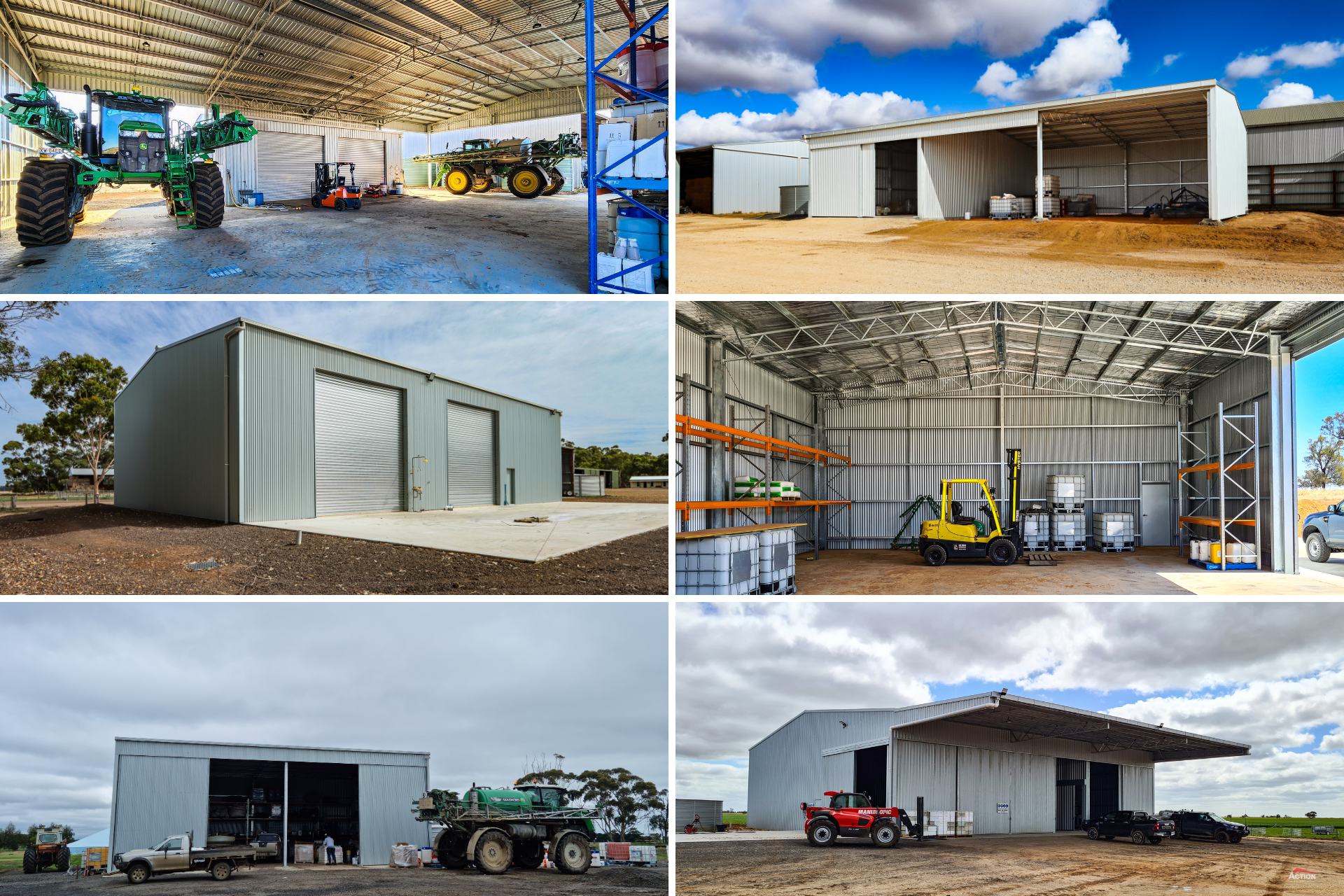With the importance of good hay storage increasing for primary producers and the local and export markets, there has been a number of developments and trends for hay sheds over the past few years.
Here are some of the changes we have observed and some ideas for you to incorporate in your hay shed project.
Increased bay sizes and shed heights
Bigger is better!
While the 270-metre-long hay shed at Warracknabeal is one-of-a-kind, generally, hay sheds are increasing in size.
Bay spacings and shed heights are both getting bigger.
8 metre bay spacings have been popular for several years now due to being both cost-effective and practical. However, 2020 saw an increase in bay sizes for hay sheds with bay spacings of 8.25 metres and 8.5 metres becoming more common – and in some cases customers opted for 9 metre or 10 metre bay spacings!
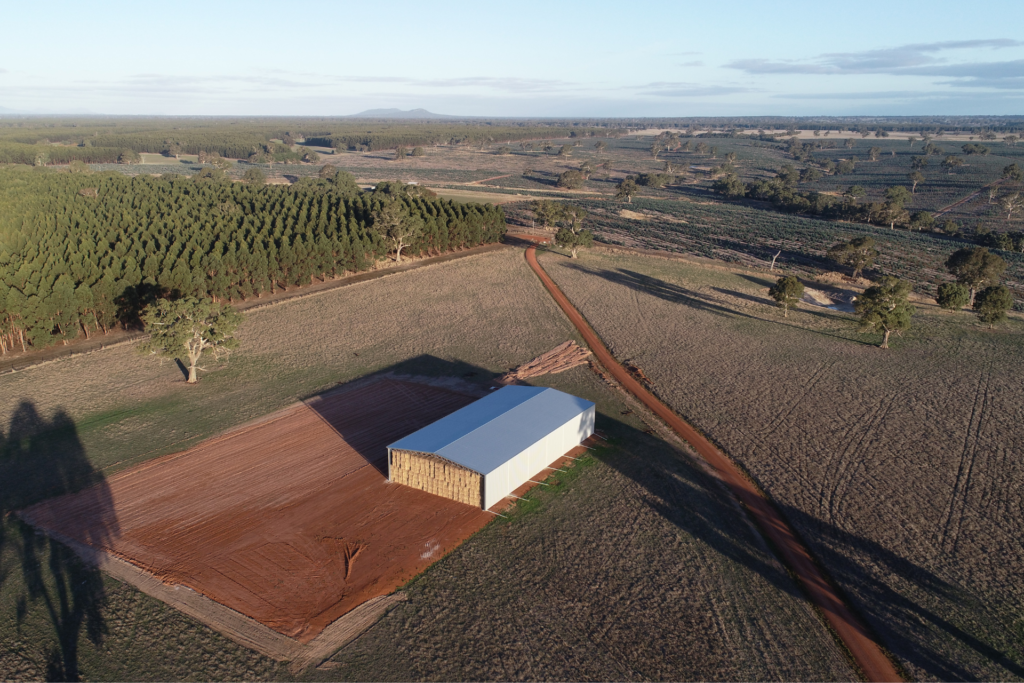
This trend is largely driven by the advantages of quicker loading/unloading and easier access to test bales.
Heights of 6.75 metres and 7.5 metres are still the most common for hay sheds but in many cases hay sheds have been built with an 8-metre clearance height to provide extra room when loading/unloading the top bales and for improved air movement around the bales.
Larger operators and export hay storage companies usually build their hay sheds 9 metres high as they have the machinery available to safely stack this high – height is also a cost-effective way to increase storage capacity.
Cantlilevered canopies
Canopies are becoming a common addition to farm shed projects – especially for hay sheds, machinery sheds and machinery workshops.
One of the important advantages of installing a canopy on a hay shed is the extra protection of your hay from the prevailing weather, preventing weather damage.
Larger canopies also allow trucks to be loaded or unloaded undercover and out of the weather.
Cost-effective configurations
The most popular hay shed sizes and configurations are those in our standard size range (a range of sheds that the Action team researched, designed and developed for the agricultural industry).
This has helped ensure our hay sheds are cost-effective, practical, and suited specifically for hay storage. These standard shed designs work out to be the best cost-per-bale option. Popular sizes from 2020 include:
The 32m (L) x 18m (W) x 6m (H) – stores approx. 1,008 big square bales.
The 48m (L) x 24m (W) x 7.5m (H) – stores approx. 2,050 big square bales.
The 64m (L) x 24m (W) x 7.5m (H) – stores approx. 3,650 big square bales.
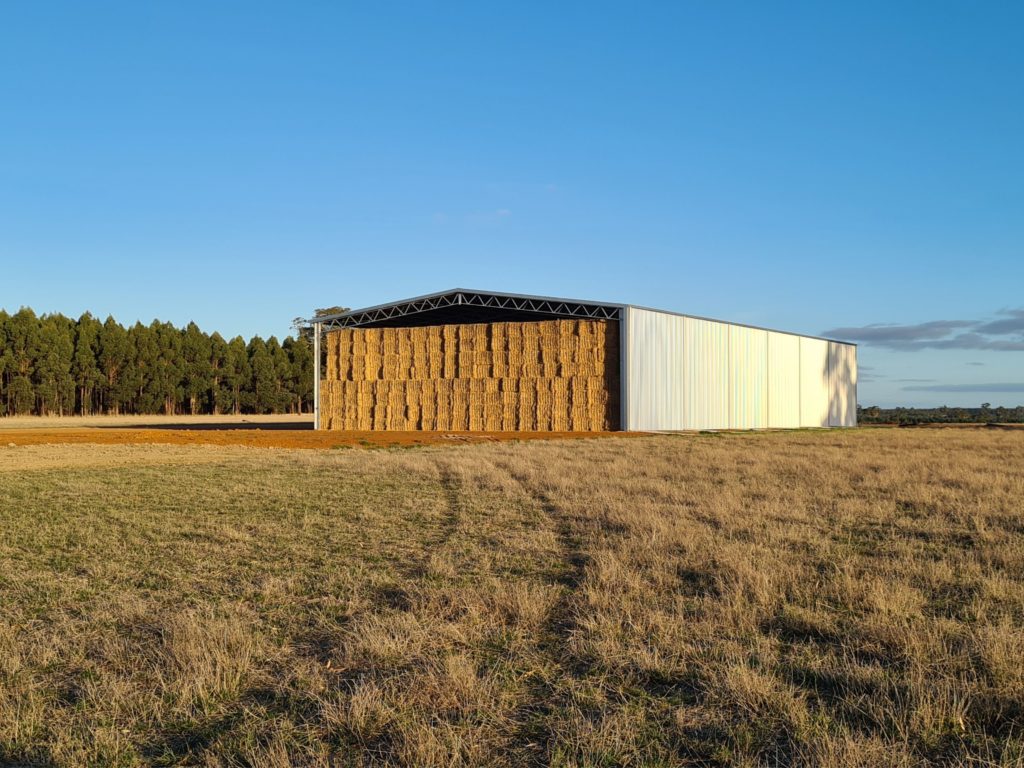
Our building consultants are able to provide you with a range of options for your hay shed and a cost-per-bale figure for each for comparison.

